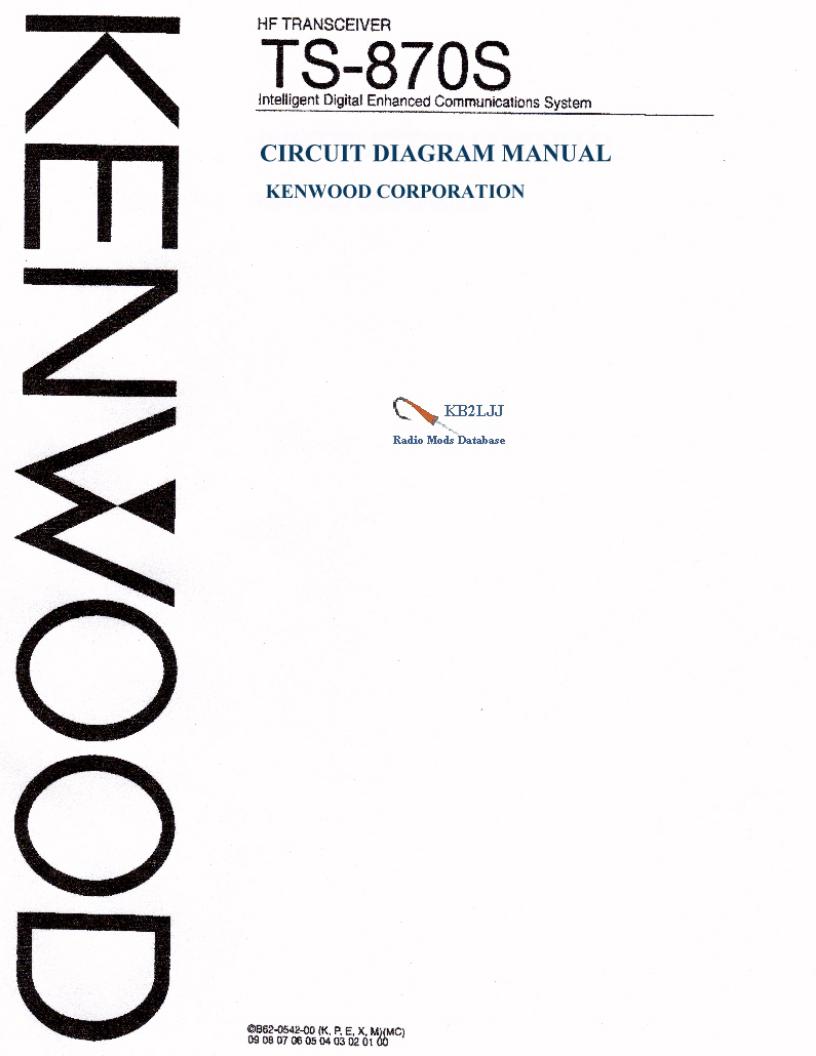Kenwood ts 870s schematic

Page 1 of 3
Making super radio out of TS-870
I loved the TS-870 when I first got it. Size is ideal for expedition radio, light weight, fits in carry on luggage.
Features and computer controls are excellent, until I used it in the contest on 160m. Bloody thing got overloaded
with signals 4 kHz away. Everybody was QRMing me! What a piece of blinMaking super radio out of TS-870 king junk! Liking t inquired at Kenwood about the problem of overload. They came up with modification to remedy the gain
distribution in the RF and mixer stages, which was implemented in later production models. After I received the service manual, I started to dig into the radio and came up with few more improvements.
Earlier production units before S/N 801xxxxx had problem with front end overload and consequent distortion and crossmodulation in the later stages, including DSP, especially noticeable on low bands. To remedy that on those earlier units see the Overload Modification.
There is an absence of 2nd RX antenna switching (Beverages, etc.). When I inquired at Kenwood, they supplied modification instructions that required some drastic modifications, including cutting the traces. When I obtained service manual, I figured very elegant modification using just plug in diode. See 2nd RX Antenna Switching modification.
Examining the circuits and filtering arrangement, I have found that Kenwood engineers decided to rely on obtaining the selectivity mainly by using the DSP. Theoretically it is great, except when strong signals blow by the mediocre crystal filters used in stock TS-870, they modulate the following stages, including DSP circuits. The biggest improvement that puts this radio one class higher, is to replace the stock 2nd IF crystal filter and 3rd IF monolithic ceramic filter with high quality International Radio or other filters. Any better shaped filters make tremendous improvement to the selectivity, overload and DSP performance. Depending on intended use, you can use 2.7, 2.4 or 2.1 kHz bandwidth filters. I chose 2.1 mainly for contesting purposes. It is possible to use narrower filters for CW operation, but selectivity selection scheme via microprocessor controlled switching makes it complicated and throws the controls off their markings. I found that 2.1 filters work very well even for CW and are significant improvement over stock arrangement. See Filter Modification.
Overload Modification
NOTE: the changes do not apply to radios with S/N 801xxxxx and later.
Problem:
If there is any strong signal in the proximity on the low bands, it will cause crossmodulation and create a "ghost" signal. It may occur in the contest operation or during the pile-up reception.
Cause:
A larger power input signal causes the second mixer output, the NB amplifier input, the third IF amplifier input, and the third IF amplifier output to be saturated.
Remedy:
Change the gain allocation of the IF stage to raise the limit of saturation. This modification will cause almost no deterioration of receiver sensitivity.
Circuits from the antenna terminal onward:
Sequence is:
Antenna, amplifier, mixer, 73.05MHz filter
Amplifier, mixer, 8.83 MHz filter - noted gain is -10dB (minus 10)
Amplifier, mixer, 455kHz filter
Two Amplifiers - noted gain is +10dB (plus 10)
Replace the following components with (Kenwood part numbers)
Caution: they are all SMT chips, you need to be familiar with SMT soldering procedures.
